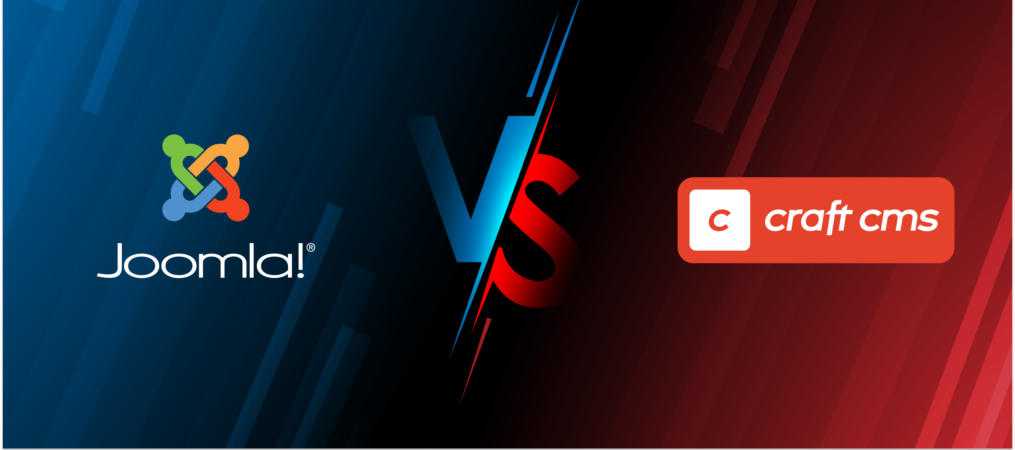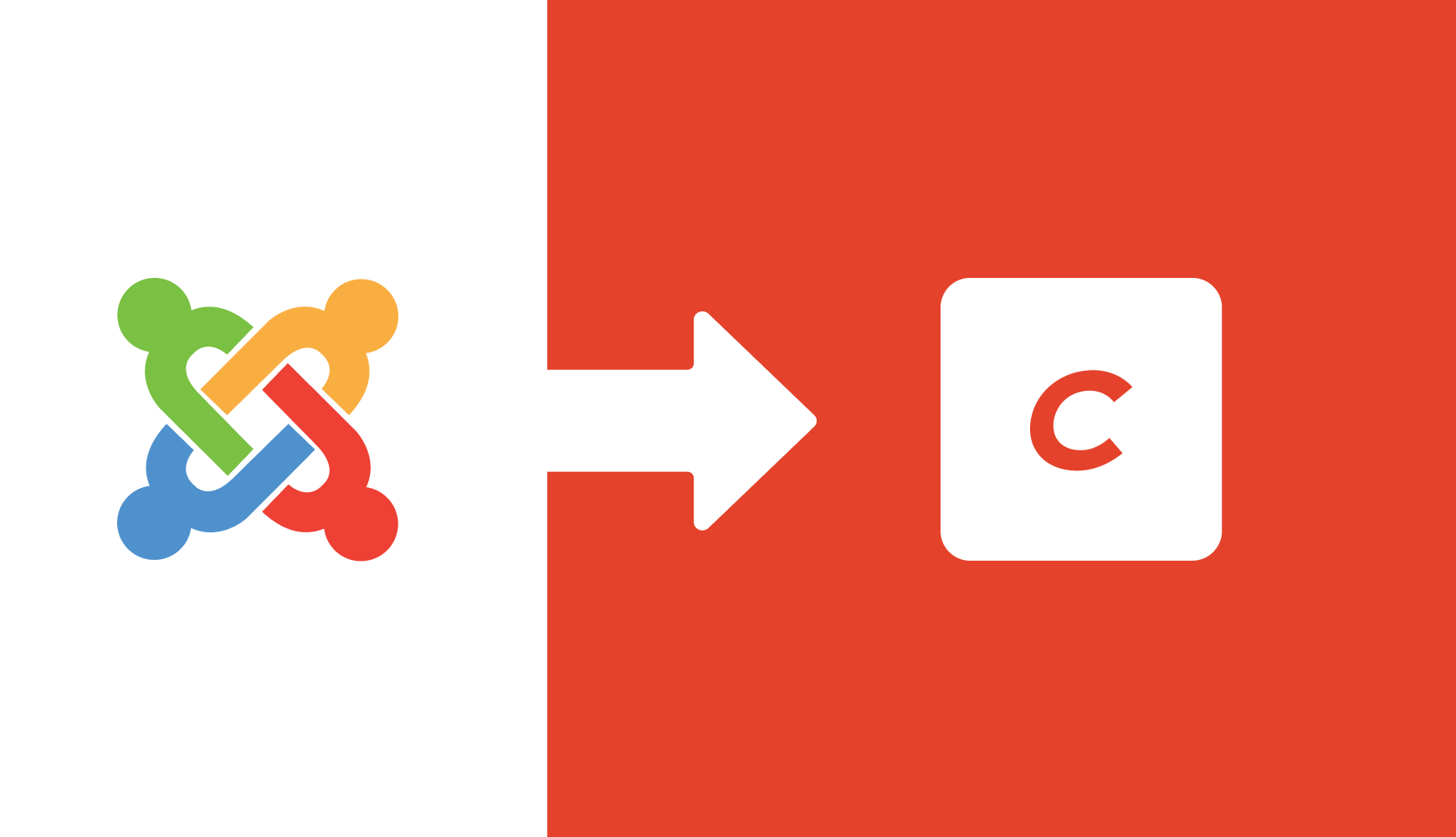
Joomla vs Craft CMS comparison reveals eight critical areas where Craft CMS outperforms its predecessor, from superior customization and cleaner user interfaces to better security and scalability, with a proven five-step migration process that minimizes disruption while maximizing long-term benefits.
In this blog, we'll examine the Joomla vs Craft CMS comparison across eight critical areas and walk through what to expect during migration.
1. Customization & Flexibility
While customization defines the development experience, the day-to-day user experience is equally critical when comparing Joomla vs Craft CMS. Let's examine how content managers interact with these platforms.
2. User Experience (Backend)
The backend interface of Joomla functions adequately but appears dated and cluttered to many non-technical users. Its steeper learning curve creates barriers for clients trying to manage their own content effectively. Our team regularly spends excessive time training clients on basic content management tasks, with the complexity frequently leading to user errors and ongoing support requests.
With a focus on usability, Craft CMS provides a clean, modern control panel specifically designed with content managers in mind. Minimal clutter and intuitive workflows significantly reduce the learning curve for clients. This thoughtful design has dramatically decreased our post-launch support requirements and increased client satisfaction with their ability to independently manage their websites.
Beyond the core system, the extension ecosystem plays a crucial role in the Joomla vs Craft CMS decision. The approach to plugins dramatically affects development stability and security.
3. Plugin/Extension Ecosystem
When it comes to extensions, Joomla relies heavily on its vast library, which presents considerable challenges. Quality varies greatly between extensions, creating potential conflicts, bloat, and performance issues if not carefully managed. Managing dependencies between extensions often becomes a project unto itself, diverting development resources from more valuable improvements.
Taking a different approach, Craft CMS embraces quality-over-quantity with fewer but higher-quality, developer-vetted plugins. This focus on minimal reliance reduces potential conflicts and security vulnerabilities. When we do need to extend functionality, Craft's well-documented plugin architecture makes custom development straightforward and maintainable.
The plugin ecosystem directly impacts another critical factor in the Joomla vs Craft CMS comparison: site security. Let's examine how these platforms protect your valuable digital assets.
4. Security
Due to its widespread popularity, Joomla has historically been a more frequent target for hackers. Security depends heavily on keeping extensions updated and properly configured, creating multiple potential points of failure. This requires vigilant monitoring and maintenance to prevent vulnerabilities.
From a security standpoint, Craft CMS offers stronger out-of-the-box protection with fewer plugins equaling fewer vulnerabilities. Its lower profile in the CMS market also makes it less frequent target for hackers. We've found that the security-conscious design decisions in Craft significantly reduce the maintenance overhead required to keep client sites secure.
Security and performance often go hand-in-hand in the Joomla vs Craft CMS debate. A faster site isn't just better for users—it's essential for modern SEO.
5. Performance & Speed
As digital presences grow, the scalability of a CMS becomes increasingly important. Let's compare how Joomla vs Craft CMS handle expanding content needs and traffic demands.
6. Scalability
For growing websites, Joomla scales reasonably well, but managing complexity can become cumbersome without custom development as sites grow. We've found that larger multi-site implementations often face performance and maintenance challenges that require significant additional development work to address.
On the scalability front, Craft CMS excels with complex, growing websites and web applications. It efficiently handles multiple sites from a single installation, allowing platforms to grow alongside business needs. This scalability makes Craft an ideal choice for dynamic, expanding enterprises with evolving digital requirements.
While business stakeholders care about results, development team's experience with the CMS directly impacts project timelines and quality. The developer experience differs significantly when comparing Joomla vs Craft CMS.
7. Developer Experience
From a coding perspective, Joomla's development approach is less elegant. The templating system, while functional, is dated and more convoluted than modern alternatives. Our development team often struggles with legacy patterns that don't align with current best practices.
Developers consistently praise Craft CMS for its clean architecture, robust templating (Twig), and great documentation. This modern development environment significantly increases our team's efficiency and job satisfaction. The logical organization and thoughtful API design mean we spend more time creating value and less time fighting with the system.
Ultimately, the success of websites depends on fresh, engaging content. How do these platforms serve the people who create that content? The content editor experience reveals another key difference in the Joomla vs Craft CMS comparison.
8. Ease of Use (for Content Editors)
Content editors often find Joomla overwhelming despite its basic functionality. The interface requires more steps to publish and manage content, and the learning curve can be steep for team members without technical backgrounds. This often results in content bottlenecks where updates depend on technical staff.
In contrast to this complexity, Craft CMS provides an intuitive and clean interface with a tailored content editing experience. The streamlined publishing workflow means marketing teams can manage content independently without technical support. This empowers content teams to work more efficiently and reduces development team interruptions for content updates.
For businesses considering the leap from Joomla to Craft CMS, the technical advantages are clear. While migration requires initial investment, the long-term benefits in development efficiency, security, performance, and ease of use make it a strategic decision for forward-thinking organizations.
Understanding the differences between Joomla vs Craft CMS is just the beginning. For organizations considering migration, knowing what to expect during the transition is equally important.
The Migration Journey: What to Expect When Moving from Joomla to Craft CMS

The migration from Joomla to Craft CMS typically follows a structured approach:
Consultation and Planning
We analyze the existing site architecture and content models to determine how they'll map to Craft's more flexible system.
Content and Data Migration
We develop a custom migration strategy that preserves critical content while taking advantage of Craft's superior organization capabilities.
Custom Development and Design
We build the new site structure and design elements to leverage Craft CMS's strengths.
Testing and Optimization
We thoroughly test all functionality and optimize performance before launch.
Launch and Support
We manage the transition with minimal disruption and provide post-launch support.
With a clear understanding of both platforms and the migration process, the decision to switch from Joomla to Craft CMS comes down to specific business needs.
Conclusion: Is Craft CMS the Right Move for Your Project?
Ready to Break Free from Joomla's Limitations?






